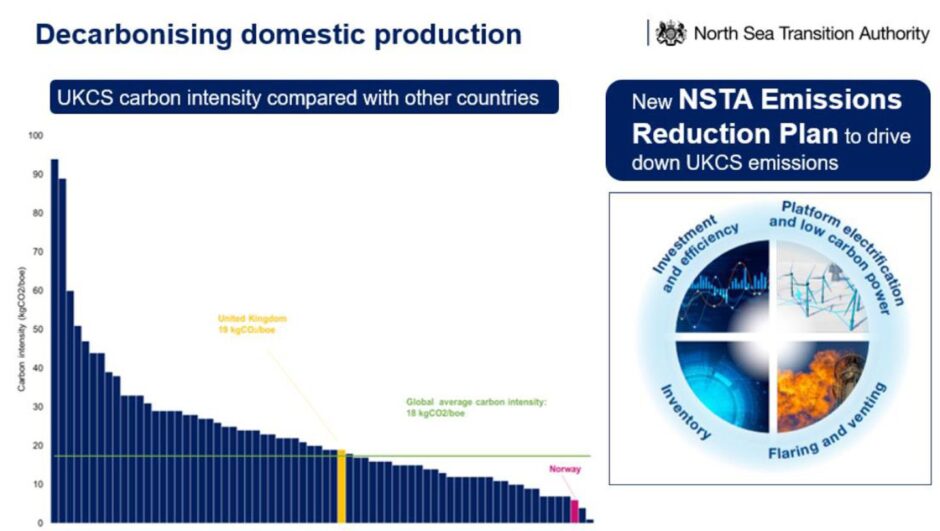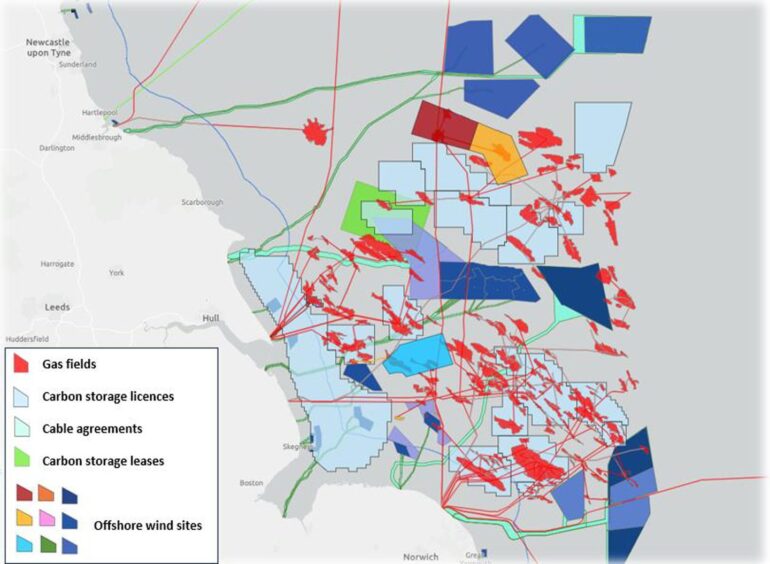
The North Sea basin could produce another 5 billion barrels of oil and gas – but only if it can strip carbon pollution from its operations, the industry regulator has warned.
North Sea Transition Authority (NSTA) chief executive Stuart Payne told an audience at a recent event in Aberdeen that “domestic production must be decarbonised production”.
He highlighted that North Sea carbon pollution, in the form of production emissions, was three times greater than in the Norwegian North Sea – and slightly higher than the global average.
He said the NSTA was “intent” on closing the gap and suggested the industry needs to continue reducing its carbon footprint if it is to continue “business as usual”.
Oil and gas producers have made “good progress”, he said. North Sea firms have reduced overall emissions 23% since 2018, and have achieved near 50% reduction in flaring.
He said without “step change” targets agreed by industry in the North Sea Transition Deal would “likely be missed”.
This is why oil and gas installations need to be powered with electricity, albeit he admitted “electrification will be expensive”.
“Electrification, particularly on existing facilities, will be complex,” he said.
“But when did this industry ever not do something because it was hard?”
He added: “The UK’s relative performance on production emissions will either be a reason to defend it, or a reason to oppose it,” he said.
“Energy security alone will not be sufficient reason to continue with business as usual.”
Hubs strategy
In the speech at the Energy Industry in Transition Conference hosted by the University of Aberdeen, he set out the watchdog’s “vision” for the future North Sea oil and gas production.
This includes “decarbonised hubs with zero routine flaring and venting, linked to a network of tie backs and near-field developments”.
He added: “Done right there could be another 5bn barrels of production from the North Sea, with a potential emissions saving of up to 25million tonnes of CO2 against business as usual.
“Done right, this city can continue speaking with pride about a world-leading oil and gas industry decades from now.”
Overcoming the ‘invisible’ and the ‘impossible’
The industry must also grapple with the “offshore energy Rubik’s cube” of competing uses of the North Sea.
In addition to the “interconnected web” of oil and gas wells, platforms and pipelines, there will be thousands of wind turbines, subsea carbon stores as well as “vital interests” like fishing, defence, and aquaculture as well as potential a network of Marine Protected Areas.
He said: “Resolving this will be one of the challenges this current – and future – generation of leaders, policy makers, scientists and engineers have to step up and deal with.
“In years gone by, great minds have worked together to tackle depths of imaging in the subsurface that we previously considered ‘invisible’.
“In years gone by, great minds have worked together to deploy operations in water depths, and into reservoir pressures and temperatures that we were considered ‘impossible’.
“Getting the full value out of the huge potential that the North Sea offers is the challenge of our time. We need great minds to work together again.”
Next step for Asset Stewardship Taskforce
The NSTA along with the sector trade body, Offshore Energies UK, has released an initial template operators can use when forming joint venture hubs.
The industry and regulatory Asset Stewardship Taskforce has devised a template that for operators to forge joint ventures that will help “identify areas of value, improve delivery, drive collaboration and improvements”.
Recommended for you


 © Supplied by NSTA/ Rystad
© Supplied by NSTA/ Rystad © Supplied by NSTA
© Supplied by NSTA